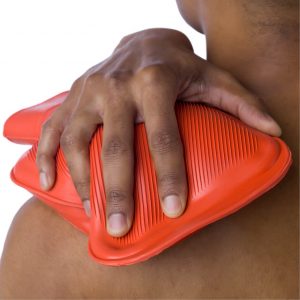Pain has been an ongoing topic for research and discussion for a long time. Nearly everyone feels it (I say ‘nearly’ because there is actually a very small minority of people with a special condition that does not allow them to feel pain), and it varies in character and severity depending on what part of the body is implicated. And for the most part, none of us like being in pain. When we feel pain, normally the first thing we do is to look for a way out of it (or as some of you like to, ignore it –
When it comes to the body, we usually feel pain because our body is sending us a signal letting us know something is not quite right. That might be down to a simple muscle imbalance or joint restriction, which is leading us to walk or run differently. Or it might be down to something more serious like a tear of a muscle or tendon, changes in the nervous system or a problem with an organ deep inside the body – the list of causes is long and complex.
Regardless of the cause, when in pain it’s human nature to want to know how to get rid of it. Some of you turn to the experts (i.e. like your local Osteo/Myo/TCM practitioners, and other professionals like doctors), and some prefer to self-diagnose using www.DrInternet.com (how’s that been working out for you?!).
Some of the most common and well-known forms of pain relief include manual therapy, use of temperature, medications, supplementation and diet – you’ll find a brief overview of each below:
Manual therapy
We as humans have been using our hands to treat the body for a very, very, very long time! If you walk into a clinic in pain, be it you have a swollen ankle or the inability to lift your arm above your head, your practitioner will get to work on you using a whole host of techniques (after they have carefully and correctly diagnosed you of course!). Soft tissue massage and myofascial release techniques are widely used in the management of musculoskeletal pain and evidence suggests you aren’t wasting your time by getting the help of your local therapist. Your practitioner may also utilise other techniques, including joint mobilisation and manipulation, to correct your problem and to help get your pain lowered and under control. Usually you will also be given some form of flexibility or strengthening exercises to perform between treatment sessions to back up what happens in the treatment room.

Heat and cold therapy
If you’ve hurt yourself in the past, there is a good chance you’ve tried some form of treatment relating to temperature to help relieve the pain. Cold therapy can help to reduce pain, blood flow, swelling, muscle spasm, and inflammation. Heat therapy can help to relieve pain, increase blood flow, and tissue elasticity. It’s worth getting advice for the best approach for your problem.
Medication
There are countless different medications out there that can help with pain relief – these are called analgesics. Without getting too complicated, they can generally be split into Non-opioid and Opioid analgesics. Non-opioid analgesics include your well known and easily accessible medications such as aspirin, paracetamol, and anti-inflammatories (such as Ibuprofen) – these are generally good for the control of musculoskeletal pain. Opioid analgesics are there for cases of more severe pain, and include codeine, tramadol and morphine (you won’t be able to get these ones over-the-counter though!). Remember it’s always safest to consult a medical professional before using any form of medication.
Supplementation & Diet
There is no shortage of nutritional supplements available to assist you in the non-pharmacological management of pain also. From anti-inflammatory herbs like Curcumin (derived from Turmeric), Boswellia and Ginger to Fish Oil and Glucosamine and Chondroitin. Similarly, diets high in Berries, Fatty fish like Salmon or Sardines, Green Tea, Avocadoes and Broccoli can assist with reducing inflammation. In conjunction with the avoidance of sugar and highly processed/refined foods, alcohol and trans fats.
If you are injured or in pain or would just like to know more about pain and the many ways to manage it we recommend you to book a consultation with one of our practitioners today so they can talk through your problem, assess you thoroughly, and then advise the best course of action for you.
Our aim is to help get you out of pain and moving better again! Say ‘au revoir’ to pain! 🙂







